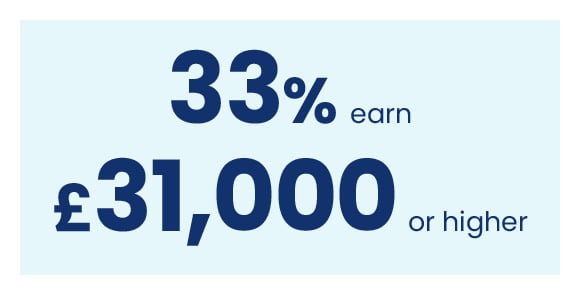Professional standards
The specialism professional standards are documents created by groups of sector employers and industry experts. They set out the scope of the specialism and the knowledge and skills required to work competently in that area across a number of key topics.
The professional standards are used by training providers, who map their courses to different topics of a relevant standard. They are then able to indicate that their training delivers the skills and knowledge that real-world industry employers are looking for in sport and physical activity professionals.
As the guardian of these standards, CIMSPA monitors and assesses courses that are mapped to them. Those deemed to deliver quality training that is aligned with a professional standard are given the status of CIMSPA endorsed. By seeking out CIMSPA-endorsed courses, you can be sure that your money is spent on gaining useful knowledge that will add an edge to your personal training work. This way, your services will shine in a busy industry.
View professional standards
The Training Academy for Sport and Physical Activity
But where to find CIMSPA-endorsed training? To make it easier to find the training you need to progress in your personal training career, CIMSPA has created the Training Academy for Sport and Physical Activity.
Whether you are looking for academic studies or on-the-job training, a long-term course or bite-sized CPD, the Training Academy has a wide range of CIMSPA-endorsed options mapped to professional standards.
Easily searchable, you can filter the opportunities to match your location and for in-person, online or hybrid delivery. While the service has only just launched, there are already plans to add new courses. This means that as you progress in your career, new options will become available for gaining even more specialist knowledge and skills.
Visit Training Academy
Your future
Once you’ve levelled up your professional skills and gained a specialism (or two, or three), you may wish to find a new role in the sector to match. While generalist job sites appear to offer thousands of opportunities, it can often be difficult to filter for relevant vacancies that match your specialist skill set.
Enter the CIMSPA sector jobs board. With our new sector-specific tool, you can find roles relevant to you. By searching by sector industry as well as job type and more general filters like location and salary, you can see real jobs that require your knowledge and match your needs.
Not only are vacancies on the CIMSPA sector jobs board all sport and physical activity roles – but all of the employers are CIMSPA partners. As CIMSPA Employer Partners, businesses commit to embedding professional standards into their organisation and supporting their employees to develop professionally.
This means that you can trust every single vacancy on the board. Each employer will provide you with a supportive environment in which to grow, adapt and succeed in your career as a personal trainer.
Visit sector jobs board
Although the market is challenging in 2024, the future is bright for personal trainers. Salaries remain reasonably high and specialising through professional standards can open doors to new work and clients. There are plenty of opportunities for career progression, all accessible via CIMSPA’s easy-to-use Training Academy and sector jobs board.
The data in this article was collected from the CIMSPA Data Lens, the Office for National Statistics (including the Labour Force Survey and the Department for Education) and Companies House.

